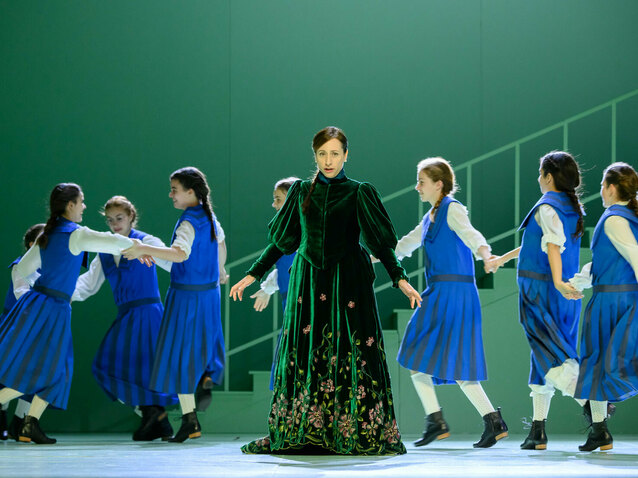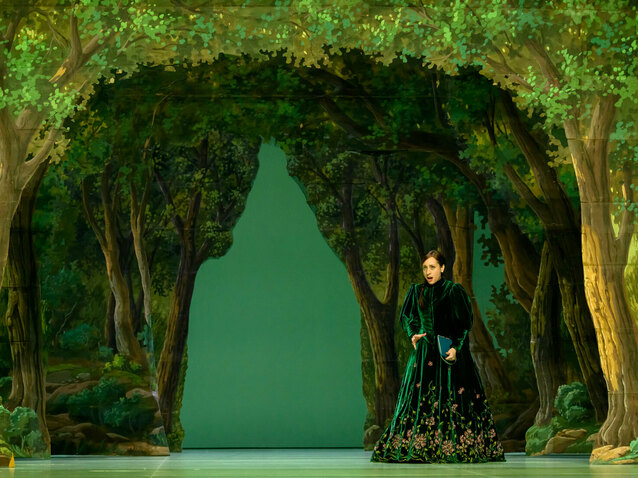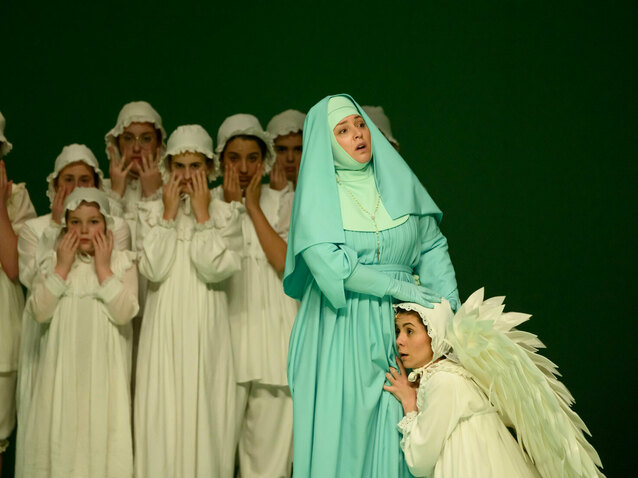 © A. Bofill / Liceu
© A. Bofill / Liceu
Herculine Barbin, also known as Alexina B., was born in France in 1838. At birth it was decided that she was a female and she was raised as a girl. When reaching puberty, she realized that her body was not developing like those of the rest of the girls. She never menstruated but suffered from severe pain.
Alexina B. found a job as a teacher in a girls’ boarding school where she fell in love with Sara, the daughter of the director of the centre. After their first love encounter she began to think that she felt like a man and started a long medical and legal path that culminated in a court ruling that allowed her to change sex. Alexina, became Abel.
As Alexina, she did not fit into the world of women; as Abel, he did not fit into that of men and neither society, nor medicine, nor religion could accept someone who wasn’t either a man or a woman.
Alexina/Abel committed suicide by inhaling poison gas in Paris in 1868, at twenty-nine years old. A letter and handwritten memoirs titled Mes souvenirs were found next to the corpse which the forensic doctor kept and were published (probably with redactions) in 1874. In the following years the case was forgotten completely.
More than a century later, the French philosopher Michel Foucault located Mes souvenirs in an archive and the work was published in 1978. It is currently considered that this is the first known autobiographical testimony of an intersex person, a definition which nowadays recognises more than forty variants and which represents a 1.7 percent of the population.
It is from the knowledge of Mes souvenirs that the poet, translator and teacher of comparative literature at the Sorbonne Irène Gayraud proposed to the composer from Barcelona Raquel García-Tomás to make an opera telling this story. From its beginning, Marta Pazos joined the project as stage manager, who had already collaborated with Raquel García-Tomás in a previous opera, Je Suis Narcissiste (2019).
Alexina B. is therefore not the typical case of a multidisciplinary opera in which someone sets music to a pre-existing libretto and finally someone performs it on stage. Alexina B. is an interdisciplinary opera that was born slowly and with difficulty (two months ago the work was still not completely finished) as a result of the work of three artists working at the same time.
The work, organized in twenty-two scenes, requires the participation of five singers: a mezzo-soprano for the role of Alexina/Abel, a soprano for that of Sara and three other voices: soprano, countertenor and mezzo-soprano who perform secondary characters. The opera also includes a very important participation of a female children's choir. The instrumental part is taken over by an orchestra of only twenty musicians and the work includes electronics, video and amplification.
At the end of the opening night, the audience stood and applauded for more than eight minutes. Never in the last forty years had the absolute premiere of a contemporary opera achieved such great success at Liceu.
Alexina B. works completely and works as a whole. The libretto, in French, by Gayraud, very faithful, allegedly, to Mes Souvenirs, explains the situation clearly, it's forceful but it is also luminously poetic. The stage direction of Marta Pazos builds dramatic situations with intensity and draws the characters very well. The choreography, by María Cabeza de Vaca, moves the choir of girls with exquisite precision and dramatic meaning and the scenography, by Max Glaenzel, plays with the ambiguity between real and symbolic spaces. It juxtaposes in a very suggestive way the schematism and simplification of the background and sides with the use of old painted curtains which, willingly, when showing their folds, don’t hide the old and beautiful contradiction between artificiality and a desire for realism.
Silvia Delagneau's wardrobe gives symbolic value to colour: it is of varied colours for the central characters and lichen green for all the characters who embody the system, a colour that melts and mixes them with the lichen green of the scenography.
The score is complex and very pleasant to listen to. Raquel García-Tomás creates a music perfectly adapted to the singing line for this story that takes place in 19th century France that sometimes evokes the impressionism of Debussy or even Ravel. It also quotes, deconstructs and reworks with current musical treatments close to the codes of cinematographic music Liszt's piano pieces (Sposalizio from Dèuxieme Anée de Pèlerinage or Bénédiction de Dieu dans la solitude from the Harmonies poétiques et religieuses), two responsories from the twelfth century (Favus Distillans and Ave Maria) by Hildegard von Bingen and the French folk song Compagnons de la Marjolaine.
As the piece portrays a case of intersexuality at a time when society did not know nor could understand a situation of this type, Alexina B.'s music must necessarily illustrate situations of violence and sordidness, but it's not this social and religious rejection that dominates the score (nor the libretto). Surprisingly, Alexina B. is, above all, an (impossible) love story and the emotions most often and better expressed in the score have to do with affection and tenderness.
Alexina B.'s music is entirely from the beginning of the 21st century and it is so because, renouncing the tyranny of the "isms" of contemporary music in the second half of the 20th century, it happily mixes, uninhibitedly and without any sense of guilt, electronics, amplification, tonality, free reworking of the past, sprechgesang,cinematographic resources and whatever it takes to build a powerful musical language that reaches the audience.
To round off the proposal, the interpretation was excellent. Lídia Vinyes Curtis fully committed to the character of Alexina/Abel and Alicia Amo did the same with Sara's. Xavier Sabata incorporated excellently both vocally and stage-wise the male characters who embody the system and played the roles of the three doctors, the two clergymen and the judge, all of them short, but which form an exhausting set. The same happened with Elena Copons who solved always very well the characters of the police officer, of Madame P., of Alexina's mother and finally, that of Sister Marie des Anges. The young Mar Esteve did very satisfactorily the roles of young Alexina, Léa, the pupil of the convent and the boarding school student. It is worth highlighting the great work of the Vivaldi-Petits Cantors de Catalunya choir in the extensive and difficult choral part of the work.
Ernest Martínez-Izquierdo, a Catalan conductor specializing in contemporary opera who, inexplicably, had never performed at the Liceu, achieved enormous success in managing to make the splendid and brand-new music shine.
One of the problems that could threaten Alexina B's future lies in the possibility that her unconditional approval (or equally unconditional rejection) be made only from an ideological bias due to the subject it deals with, rather than the fundamental fact that this is a great opera, a great work of art.
Xavier Pujol
Barcelona, 18th March 2023
Alexina B. by Raquel García-Tomás based on a libretto by Irène Gayraud inspired by the memoirs of Hérculine Barbin (also known as Alexina B.) Mes Souvenirs (Paris, 1874). Lídia Vinyes-Curtis, mezzo-soprano. Alicia Amo, soprano. Elena Copons, soprano. Xavier Sabata, countertenor. Mar Esteve, mezzo-soprano. Orchestra from Gran Teatre del Liceu. Choir Vivaldi-Petits Cantors de Catalunya. Ernest Martínez-Izquierdo, conductor. Marta Pazos, stage director. Max Glaenzel, scenography. Silvia Delagneau, costumes. María Cabeza de Vaca, choreography. Nuno Meira, lighting. Gran Teatre del Liceu.
the 21 of March, 2023 | Print


Comments